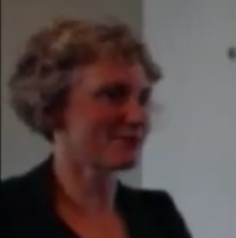Beth Parks | |
|---|---|
 Beth Parks in 2015 [1] | |
| Born | Mary Elizabeth Lampert 28 May 1966 |
| Citizenship | U.S.A. |
| Alma mater | Princeton University, University of California, Berkeley |
| Scientific career | |
| Fields | Physics |
| Institutions | MIT Department of Physics, Colgate University, Mbarara University of Science and Technology |
| Thesis | "High frequency electrodynamics of the cuprate superconductors in the vortex state" (1995) |
| Doctoral advisor | Joseph Orenstein |
| Website | meparks at colgate.edu |
Beth Parks is an American physicist. She is a professor in the Department of Physics and Astronomy at Colgate University. She serves as the editor-in-chief of the American Journal of Physics since September 1, 2020. [2] [3] In addition to her research, Parks supports physics education through multiple channels. [4]